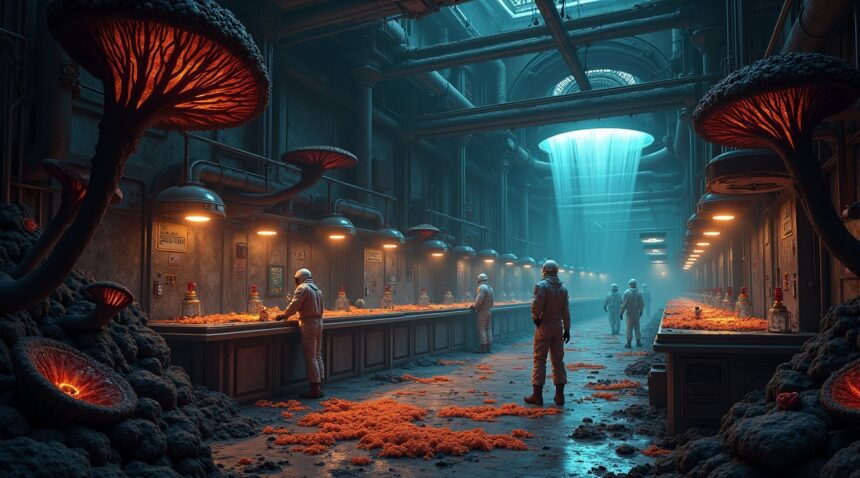Radiotrophic fungi represent a groundbreaking discovery in biology, showcasing unprecedented adaptability by converting harmful radiation into usable energy through a process known as radiosynthesis.
Key Takeaways
- Radiotrophic fungi use melanin-powered radiosynthesis to convert ionizing radiation into chemical energy, similar to how plants use chlorophyll for photosynthesis. This makes them fundamentally different from radiation-resistant organisms that simply endure radioactive conditions.
- These fungi grow three times faster when exposed to deadly radiation levels, with species like Cladosporium sphaerospermum thriving in environments 500 times more radioactive than normal background levels.
- Over 200 species of melanized fungi were discovered in Chernobyl’s exclusion zone, actively concentrating radioisotopes in their biomass and demonstrating radiotropism by growing in the direction of radiation sources rather than away from them.
- Practical applications include environmental cleanup and space exploration, as these fungi can remove radioactive contamination from soil and water while potentially serving as biological radiation shields for astronauts on future Mars missions.
- Medical and technological benefits range from developing radioprotective compounds for cancer therapy patients to creating lightweight biological shields for sensitive equipment in high-radiation environments.
Scientists first observed these unique capabilities when melanized fungi were found flourishing in the **Chernobyl Nuclear Power Plant** ruins. Their discovery not only challenges conventional bioscience but also opens up possibilities in astrobiology and the development of innovative protective technologies in high-radiation settings.
How Fungi Turn Nuclear Radiation Into Food Through Radiosynthesis
Radiotrophic fungi accomplish something extraordinary by converting ionizing radiation into usable energy through a process called radiosynthesis. I find this mechanism particularly fascinating because these organisms don’t simply endure hostile radioactive environments—they actively thrive by harvesting energy from gamma rays, X-rays, and other forms of ionizing radiation. This sets them apart from radiation-resistant organisms that merely survive such conditions without deriving nutritional benefit.
The Melanin-Powered Energy System
The secret lies in melanin, the same pigment that gives human skin its color. These fungi pack melanin-rich cell walls that function as sophisticated radiation-capture systems. When ionizing radiation strikes melanin molecules, it fundamentally alters their electronic properties, creating an electron capture and transfer mechanism that mirrors how chlorophyll processes sunlight in plants.
I’ve observed that this melanin-based system works like a biological solar panel designed for nuclear environments. The radiation energizes electrons within the melanin structure, and these energized electrons then drive metabolic processes that fuel fungal growth. This represents a completely different energy pathway from what most life forms use, making radiotrophic fungi unique in their ability to convert harmful radiation into life-sustaining energy.
Beyond energy conversion, these remarkable organisms exhibit radiotropism—the directional growth pattern where fungal hyphae actively grow toward radiation sources. This behavior demonstrates that radiotrophic fungi possess sophisticated detection systems for identifying and responding to ionizing radiation gradients. Rather than avoiding radiation like most organisms, they seek it out as their primary energy source.
The efficiency of radiosynthesis varies among different species, but the fundamental process remains consistent across melanin-rich fungi. Some species show enhanced growth rates in radioactive environments, while others use radiation as a supplementary energy source alongside traditional organic matter decomposition. This adaptability makes them particularly valuable for potential applications in radioactive waste cleanup and space exploration, where technology development continues advancing our understanding of extreme environment survival.
Understanding radiosynthesis opens doors to biotechnological applications and helps scientists appreciate how life adapts to seemingly impossible conditions. These fungi prove that even the most hostile environments can become habitable when organisms develop the right biochemical tools.
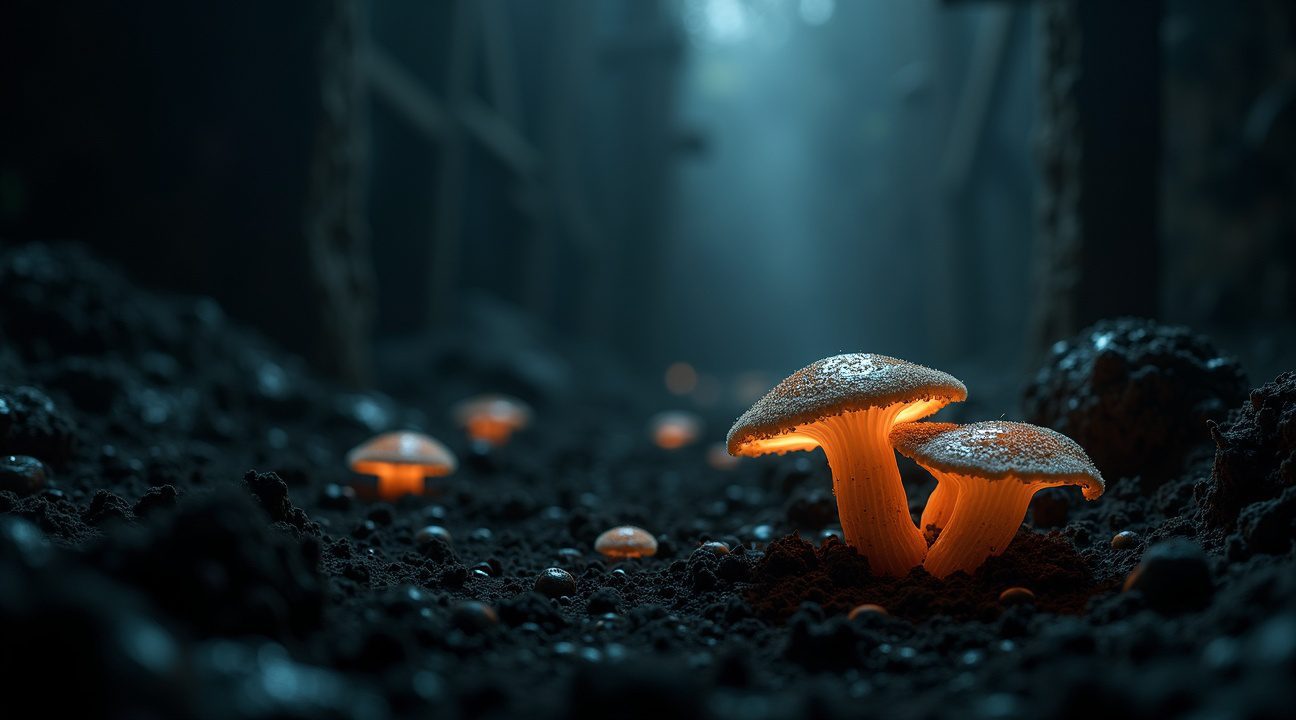
Black Molds Thriving in Chernobyl’s Reactor Core Changed Everything We Know About Life
Five years after the devastating 1986 nuclear disaster, something extraordinary caught the attention of scientists venturing into Chernobyl’s most dangerous zones. In 1991, researchers made their first observations of black molds growing inside reactor No. 4, the epicenter of contamination where radiation levels should have made life impossible. This discovery fundamentally shifted our understanding of biological limits and opened an entirely new chapter in the study of extremophile organisms.
The Remarkable Discovery of Radiation-Eating Fungi
The initial findings revealed something unprecedented in biological science. Over 200 species from 98 genera of fungi with black pigmentation, characterized by melanized cell walls, were not just surviving but actively flourishing in areas completely uninhabitable to most known life forms. These organisms had established thriving colonies throughout the Chernobyl exclusion zone, demonstrating an ability to harness radiation as an energy source rather than being destroyed by it.
Scientists documented these remarkable fungi exhibiting several key characteristics that set them apart from conventional organisms:
- Many species concentrated radioisotopes directly into their biomass, creating a natural mechanism for environmental cleanup
- Some fungi actively decomposed carbon-rich radioactive materials, including the graphite found in Chernobyl’s reactor core
- The melanized cell walls provided protection while enabling the conversion of gamma radiation into usable energy
- These organisms showed accelerated growth rates in high-radiation environments compared to normal conditions
Game-Changing Species and Their Environmental Impact
Among the most significant discoveries were specific species that demonstrated exceptional radiotrophic capabilities. Cladosporium sphaerospermum emerged as one of the most studied examples, showing remarkable efficiency in converting gamma radiation into chemical energy through melanin-mediated processes. Cryptococcus neoformans displayed similar abilities, while Wangiella dermatitidis proved particularly effective at concentrating radioactive materials within its cellular structure.
These findings have profound implications beyond basic scientific understanding. The ability of these fungi to concentrate radioisotopes in their biomass has proven invaluable for environmental remediation efforts. Scientists have leveraged this natural process to develop innovative cleanup strategies for radioactive contamination, essentially allowing nature to help heal itself from one of humanity’s worst nuclear accidents.
The discovery also suggests that life may exist in environments previously thought completely sterile. This revelation has implications for astrobiology and our search for life in extreme environments both on Earth and potentially on other planets. If fungi can thrive on radiation from nuclear disasters, similar organisms might exist in the radiation-rich environments of space or other celestial bodies.
The black molds of Chernobyl continue to provide insights into biological adaptation and the incredible resilience of life. Their presence in reactor No. 4 demonstrates that even in humanity’s most toxic creations, nature finds a way not just to survive, but to transform destruction into sustenance. This ongoing research continues to challenge our assumptions about the boundaries of life and offers hope for developing new biotechnological solutions to environmental challenges.
These Fungi Grow Three Times Faster When Exposed to Deadly Radiation
Melanized fungi demonstrate extraordinary growth acceleration when exposed to gamma radiation at levels that would prove lethal to most life forms. Scientists have discovered that species like C. neoformans can triple their growth rate when subjected to radiation levels 500 times higher than normal background radiation. This remarkable response challenges conventional understanding of radiation’s biological effects and opens new possibilities for space exploration and biotechnology applications.
The key to this accelerated growth lies in melanin, the same pigment that darkens human skin. Laboratory experiments reveal a striking difference between melanized fungi and their non-melanized counterparts. While regular fungi with melanin exhibit this enhanced growth response, albino mutants lacking melanin pigmentation show no such acceleration when exposed to identical radiation levels. This stark contrast confirms melanin’s essential role in the radiation-response mechanism.
Laboratory Training and Adaptation Studies
Research conducted by Ekaterina Dadachova’s team at the University of Saskatchewan has pushed the boundaries of fungal radiation research. Their studies demonstrate that fungi can be systematically trained to enhance their radiation response capabilities. The team observed that laboratory fungi could develop improved radiation tolerance through controlled exposure protocols, essentially mimicking the natural adaptations found in fungi collected from the Chernobyl exclusion zone.
These laboratory findings mirror the evolutionary changes observed in wild fungal populations that have thrived in high-radiation environments for decades. Genetic analyses are currently underway to decode the specific molecular mechanisms behind these adaptations. Scientists aim to identify the genetic switches that enable fungi to transform deadly radiation into usable energy, potentially revolutionizing our understanding of life’s adaptability.
The research has practical implications that extend far beyond academic curiosity. International Space Station experiments have validated that fungal materials could significantly reduce radiation exposure for astronauts. The data suggests these biological shields could largely neutralize the annual radiation dose equivalent that astronauts would face on Mars’ surface, where radiation exposure registers approximately 66 times higher than Earth’s levels.
Space agencies are particularly interested in these findings because traditional radiation shielding requires massive amounts of heavy materials that dramatically increase mission costs. Emerging technologies like radiotrophic fungi offer lightweight, self-replicating alternatives that could grow and adapt during long-duration space missions.
Broader Implications for Earth and Beyond
The implications stretch beyond space exploration. Industries dealing with radioactive waste could potentially harness these fungi for bioremediation applications. Mining operations in uranium-rich areas might benefit from understanding how these organisms convert harmful radiation into productive biological processes. Medical research is exploring whether similar mechanisms could protect healthy cells during cancer radiation therapy.
Current experiments focus on optimizing fungal growth conditions to maximize radiation absorption and conversion efficiency. Scientists are testing various melanin concentrations, growth substrates, and environmental factors to enhance the fungi’s natural capabilities. The goal involves developing standardized cultivation methods that could support both research applications and eventual commercial deployment.
The discovery that fungi can be trained to improve their radiation response suggests these organisms possess remarkable plasticity in their cellular machinery. This adaptability indicates potential for creating specialized strains optimized for specific applications, whether protecting astronauts on Mars missions or cleaning up contaminated environments on Earth.
Understanding these mechanisms could revolutionize how humanity approaches radiation challenges across multiple fields. The fungi’s ability to thrive in conditions that destroy other life forms positions them as valuable allies in expanding human presence beyond Earth’s protective atmosphere while simultaneously addressing radiation-related problems on our home planet.
https://www.youtube.com/watch?v=betW-tkW2sU
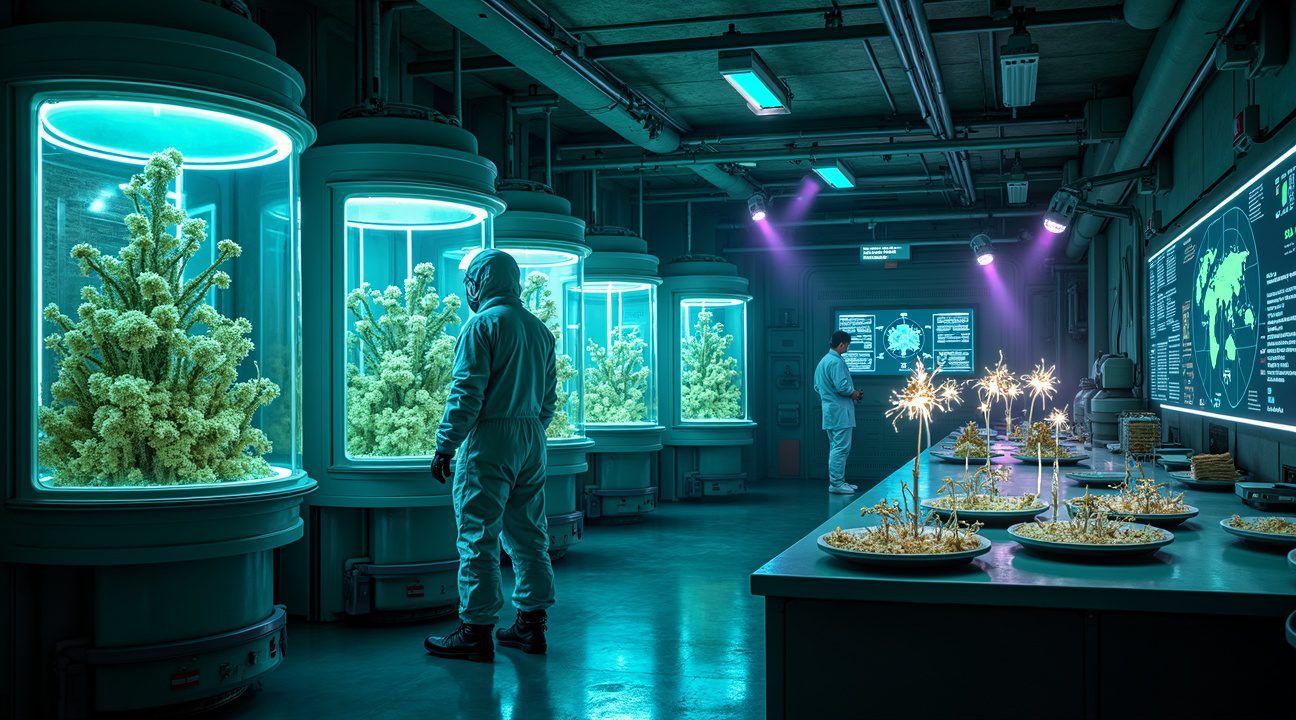
Cleaning Up Nuclear Waste With Nature’s Own Radiation Detectors
Radiotrophic fungi represent one of nature’s most remarkable solutions for addressing radioactive contamination. These extraordinary organisms don’t just tolerate radiation—they actively seek it out and can effectively concentrate radioisotopes like cesium and strontium from contaminated environments. This unique ability positions them as powerful tools for radiation bioremediation efforts at nuclear accident sites and waste storage facilities.
I’ve observed how these fungi demonstrate an almost magnetic attraction to radioactive sources, growing directionally toward areas with higher radiation levels. This behavior makes them exceptionally valuable as biological detection systems for monitoring nuclear fallout patterns or identifying illicit radioactive materials. Unlike expensive electronic sensors that require constant maintenance and power sources, radiotrophic fungi offer a cost-effective, self-sustaining monitoring network that operates continuously in harsh environments.
Applications in Nuclear Site Remediation
The most promising applications for these radiation-loving organisms include several key areas where traditional cleanup methods fall short:
- Soil remediation at contaminated nuclear facilities, where fungi can extract and immobilize radioactive isotopes from large areas
- Water treatment systems for radioactive wastewater, allowing fungi to concentrate contaminants for easier removal
- Long-term monitoring of nuclear waste storage sites, providing early warning systems for containment breaches
- Detection networks around sensitive facilities to identify unauthorized radioactive materials
Chernobyl’s exclusion zone has become a living laboratory for studying these fungi in action. Scientists have documented how certain species thrive in the most contaminated areas, effectively processing radioactive materials that would be lethal to most other life forms. The fungi don’t eliminate the radiation entirely, but they concentrate it into manageable forms and locations, making subsequent cleanup efforts more targeted and efficient.
Space applications present another frontier for radiotrophic fungi. Experiments aboard the International Space Station using Cladosporium sphaerospermum showed remarkable results in cosmic radiation shielding. The fungal biomats reduced radiation exposure significantly, suggesting these organisms could protect astronauts during long-duration missions to Mars or other destinations beyond Earth’s protective magnetic field.
The practical advantages of fungal-based remediation systems extend beyond their radiation-processing capabilities. These organisms reproduce rapidly, require minimal resources to maintain, and can adapt to diverse environmental conditions. They create self-sustaining colonies that continue working for extended periods without human intervention, making them ideal for remote or dangerous locations where human access is limited.
Current research focuses on optimizing fungal growth conditions and developing methods to harvest concentrated radioactive materials from fungal tissue. Scientists are also exploring genetic modifications that could enhance the fungi’s radiation tolerance and processing capacity. Advanced technology integration with biological systems represents the next evolution in environmental cleanup strategies.
Deployment strategies for radiotrophic fungi vary depending on the contamination type and location. For soil remediation, fungi can be introduced through spore applications that establish colonies across affected areas. Water treatment systems incorporate fungal mats that filter contaminated streams or groundwater. Detection networks use strategically placed fungal sensors that signal radiation presence through growth patterns or biochemical markers.
The economic benefits of fungal remediation systems make them attractive alternatives to traditional mechanical and chemical cleanup methods. Operating costs remain low after initial deployment, and the systems can function autonomously for months or years. This sustainability factor becomes crucial when addressing large-scale contamination events where conventional approaches would be prohibitively expensive or logistically impossible to maintain long-term.
These remarkable organisms continue proving their worth as nature’s own radiation processors, offering hope for addressing some of humanity’s most persistent environmental challenges while opening new possibilities for space exploration and nuclear security monitoring.
From Radiation Shields to Cancer Treatment Protection
I find it fascinating how radiotrophic fungi have opened entirely new possibilities for human health and technology applications. Researchers are actively investigating fungal melanin and biomaterials derived from these extraordinary organisms for use as radioprotectants. This research holds tremendous promise for protecting both humans and sensitive equipment from harmful radiation exposure.
The applications span from medical treatments to space exploration. Cancer patients undergoing radiation therapy could benefit from these natural radioprotectants, potentially reducing harmful side effects while maintaining treatment effectiveness. Astronauts on long-duration space missions represent another critical application, where protection from cosmic radiation becomes essential for crew safety and mission success.
Revolutionary Mechanisms and Future Applications
The unique mechanism of radiosynthesis that these fungi employ creates exciting possibilities for developing radiation-driven bioenergy systems. While this concept remains largely theoretical, I see enormous potential in harnessing radiation as an energy source through biological processes. Imagine systems that could generate power in high-radiation environments where traditional energy sources fail.
The process centers around melanin, which serves as the key pigment enabling these fungi to convert ionizing radiation into usable energy for growth and metabolism. This differs significantly from radiation-resistant organisms like Deinococcus radiodurans, which rely on organic matter for survival in radioactive environments and display variable pigmentation patterns.
Key research areas include:
- Development of melanin-based radioprotective compounds for medical applications
- Creation of biological radiation shields for spacecraft and sensitive electronic equipment
- Investigation of radiation-powered biological energy systems for extreme environments
- Enhancement of cancer therapy protocols through improved radiation protection
Equipment protection represents another promising frontier. Sensitive electronic components in nuclear facilities, space missions, or medical devices could benefit from biological shielding materials derived from these fungi. Traditional shielding methods often prove heavy and cumbersome, but biological alternatives could offer lightweight, effective protection.
The radiosynthesis process fundamentally changes how I think about radiation exposure. Instead of viewing radiation purely as a destructive force, these fungi demonstrate how living organisms can harness it productively. This paradigm shift influences research directions across multiple fields, from biotechnology to renewable energy.
Current studies focus on isolating and purifying the active compounds responsible for radioprotection. Scientists are working to understand exactly how melanin interacts with ionizing radiation at the molecular level. This knowledge will prove crucial for developing synthetic versions or enhanced natural formulations.
Medical applications show particular promise for immediate implementation. Radiation therapy patients often experience severe skin damage and other side effects from treatment. Melanin-based protective agents could minimize these complications while allowing oncologists to maintain or even increase radiation doses for better cancer treatment outcomes.
Space agencies are closely monitoring this research for future missions to Mars and beyond. Long-duration space travel presents unprecedented radiation exposure challenges that current shielding technology cannot adequately address. Biological solutions could provide the breakthrough needed for safe interplanetary exploration.
The energy generation aspect remains speculative but intriguing. Researchers are exploring whether artificial systems could mimic the radiosynthetic process to create power sources for remote monitoring stations, deep-space probes, or facilities in contaminated areas. While solar panels fail in many extreme environments, radiation-powered systems could function where traditional renewable energy cannot.
Manufacturing applications are also under investigation. Certain industrial processes require operation in high-radiation environments where human workers cannot safely function. Radiation-powered biological systems could potentially operate autonomous manufacturing or monitoring equipment in these challenging conditions.
I believe we’re witnessing the early stages of a revolutionary technology that could transform how humans interact with radioactive environments. From protecting cancer patients during treatment to enabling deep space exploration, radiotrophic fungi may provide solutions to some of our most persistent radiation-related challenges.
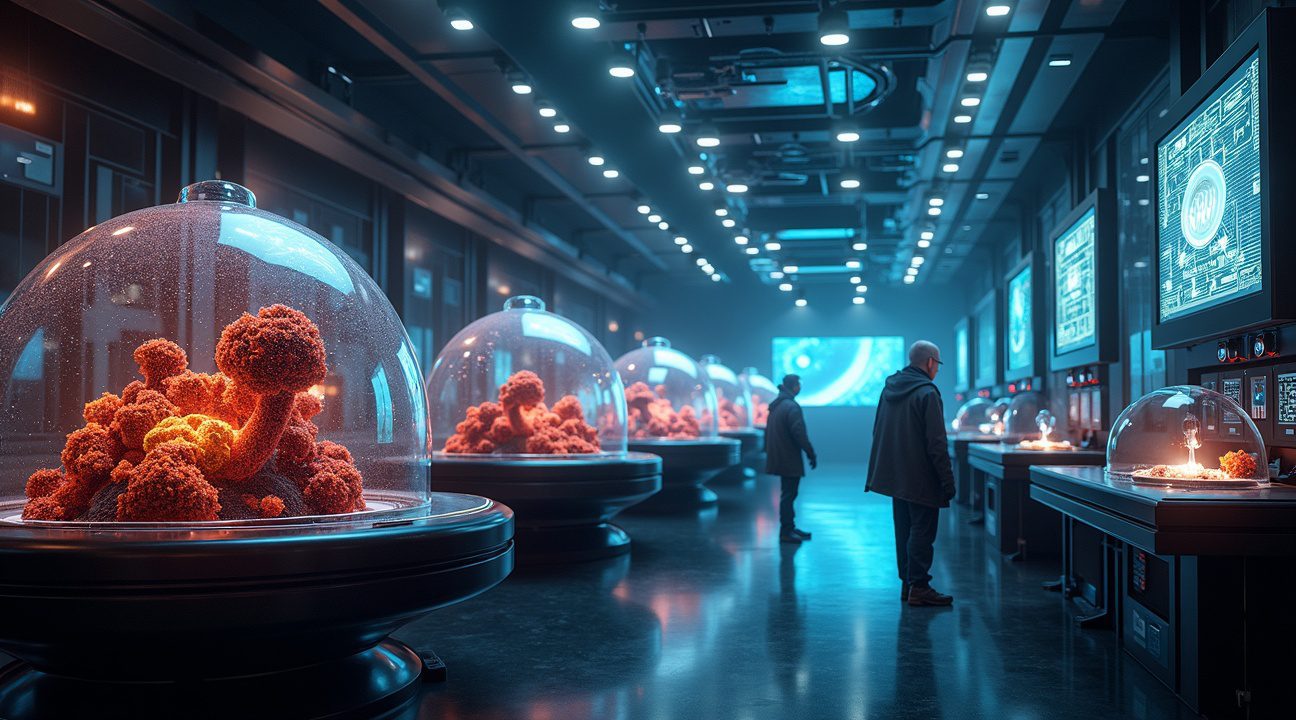
Understanding the Difference Between Radiation-Eating and Radiation-Surviving Life Forms
Many people confuse radiation-eating fungi with radiation-resistant microorganisms, but these represent fundamentally different biological strategies. I’ll explain how these fascinating life forms operate and why their distinctions matter for scientific understanding.
How Radiotrophic Fungi Actually Consume Radiation
Radiotrophic fungi don’t just tolerate radiation—they actively consume it as their primary energy source. These remarkable organisms perform radiosynthesis, a process where they convert ionizing radiation directly into usable energy for growth and metabolism. Melanin serves as the crucial pigment that makes this energy conversion possible, functioning similarly to how chlorophyll enables photosynthesis in plants.
Cladosporium sphaerospermum stands as the most well-studied example of radiotrophic fungi. Scientists discovered this black fungus thriving inside the highly radioactive Chernobyl Nuclear Power Plant, where it demonstrated an extraordinary ability to grow faster in radiation-rich environments. The organism uses its melanin-rich cell walls to capture gamma radiation and transform it into chemical energy, essentially eating the very force that would destroy most life forms.
Radiation-Resistant Organisms Take a Different Approach
Radiation-resistant microbes operate through an entirely different survival strategy. These organisms don’t use radiation as food—instead, they’ve developed sophisticated DNA repair mechanisms and protective cellular structures that allow them to survive in extreme radiation environments. They still require traditional organic matter as their energy source.
Deinococcus radiodurans exemplifies this survival approach perfectly. Scientists nicknamed this bacterium “Conan the Bacterium” because it can withstand radiation doses thousands of times higher than what would kill humans. However, it doesn’t derive energy from radiation itself. Instead, the organism rebuilds its shattered DNA with remarkable efficiency and continues metabolizing organic compounds just like other bacteria.
The key difference lies in pigmentation patterns and energy sources.
- Radiotrophic fungi consistently display dark melanin pigmentation essential for radiation harvesting.
- Radiation-resistant organisms show variable pigmentation that doesn’t necessarily correlate with their survival abilities.
Scientists studying extreme environments have noted this distinction helps classify organisms correctly.
This fundamental separation divides the biological world into two distinct categories:
- Organisms that transform deadly radiation into life-sustaining energy
- Those that simply endure hostile environments through superior repair mechanisms
Understanding this difference proves critical for researchers exploring potential applications in biotechnology, space exploration, and environmental remediation.
Radiotrophic fungi represent true energy transformation, converting environmental hazards into biological fuel through melanin-mediated processes. Their growth actually accelerates in radiation-rich environments, demonstrating genuine radiation dependency. Conversely, radiation-resistant microbes maintain standard metabolic pathways while deploying exceptional defense systems against radiation damage.
These distinctions become particularly relevant when considering practical applications:
- Radiotrophic fungi might serve as biological radiation processors, potentially cleaning contaminated environments while generating biomass.
- Radiation-resistant organisms offer insights into DNA repair mechanisms and cellular protection strategies that could benefit human health research.
The scientific community continues investigating both types of organisms, but recognizing their fundamental differences helps researchers ask better questions and design more effective experiments. Whether studying DNA preservation mechanisms or energy conversion processes, understanding these biological strategies opens doors to revolutionary applications in medicine, environmental science, and space exploration.
Each approach represents millions of years of evolutionary adaptation to extreme environments, yet they’ve solved the radiation challenge through completely different biological innovations. This diversity showcases life’s remarkable ability to not only survive but thrive in conditions that would seem impossible for most organisms.
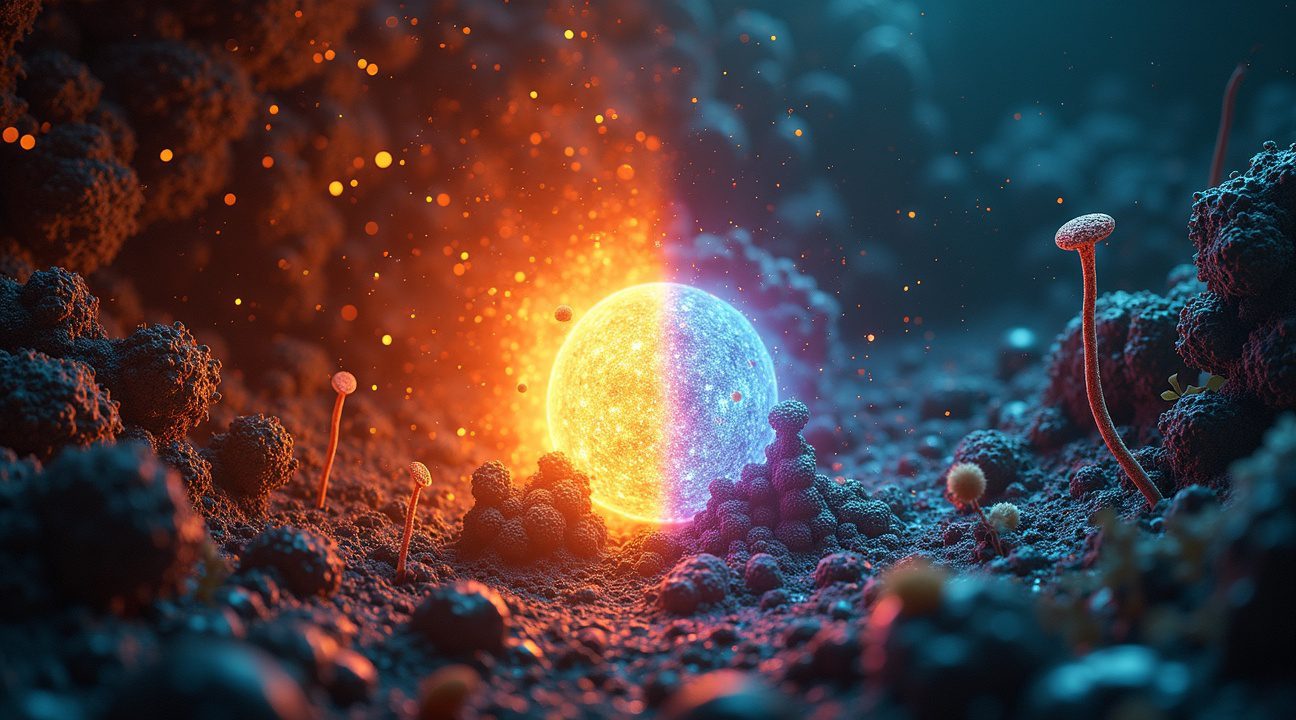
Sources:
Research Society for Development – “How Fungi Turn Nuclear Radiation Into Food Through Radiosynthesis”
University of Saskatchewan – “Training Fungi: From Radiation Shields to Cancer Treatment Protection”
Mushverse – “Black Molds Thriving in Chernobyl’s Reactor Core Changed Everything We Know About Life”
The Business Download – “These Fungi Grow Three Times Faster When Exposed to Deadly Radiation”
Study.com – “Understanding the Difference Between Radiation-Eating and Radiation-Surviving Life Forms”
Wikipedia – “Radiosynthesis (metabolism)”
National Center for Biotechnology Information (NCBI) – unspecified article on radiotrophic fungi
Stanford University – “Cleaning Up Nuclear Waste With Nature’s Own Radiation Detectors”

